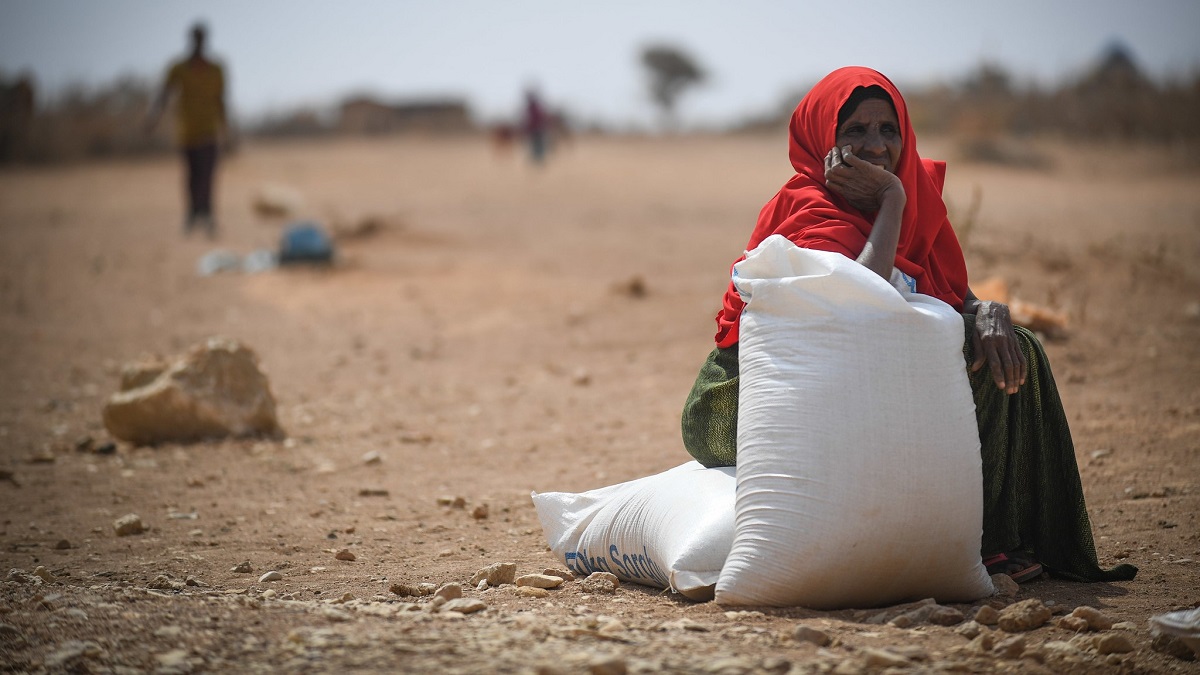UNCTAD's Least Developed Countries Report 2023 says the enormous funding gaps in these countries must be covered mainly by long-term, low-cost and accessible financial flows from international public sources.

© FAO/IFAD/WFP/Michael Tewelde | 31 August, 2017, Gode wereda Dolo Baad distribution centre, Somali Region, Ethiopia.
UNCTAD has emphasized in a new report the imperative for international financial reforms to specifically target the financing requirements of the world's 46 least developed countries (LDCs).
According to the organization's Least Developed Countries Report 2023, published on 7 November, fiscal constraints in LDCs pose a severe threat to their ability to implement crucial development policies, potentially derailing progress towards Sustainable Development Goals (SDGs) and a low-carbon transition.
UNCTAD Secretary-General Rebeca Grynspan said “The success of the 2030 Agenda for Sustainable Development is inextricably linked to the progress of these nations,” adding that time is running out for LDCs to achieve the SDGs.
Failure to promptly address the financing needs of LDCs, warns the report, will hinder their development prospects and exacerbate the impact of climate change, especially since 17 out of the 20 countries most vulnerable to and least prepared for climate change are LDCs.
Enormous funding gaps and development challenges
The report underlines the substantial financing needs of LDCs for structural transformation, meaning a shift towards high-productivity activities and sectors, which is necessary for them to meet SDGs. Pre-pandemic estimates revealed an annual investment requirement exceeding $1 trillion for LDCs to double their manufacturing share in GDP.
The economic disruptions since 2020 have further heightened this amount, now over triple the fixed investment of LDCs in 2021. Achieving this goal would require an unlikely annual growth rate of 20% in the present decade.
According to a recent UNCTAD SDG costing project, among the more vulnerable countries, LDCs face a per-person yearly cost of $372 to achieve the SDGs. When gauged against their national economy, LDCs bear the heaviest burden, as for example, advancing social protection and decent jobs would require 45% of their GDP.
UNCTAD emphasizes the inadequacy of current external financing for LDCs, which is marred by economic and political conditionalities, inefficiency and high costs. The report calls for a substantial increase in development and climate finance, including grants and low-cost loans under highly concessional conditions.
LDCs are grappling with multiple crises, including the impact of COVID-19, slow global economic growth, inflation, geopolitical tensions, and declining foreign direct investment. These crises have led to a 16% shortfall in income per capita in 2023 compared to growth targets.
The debt crisis has further eroded the fiscal space in these countries. The median ratio of general government debt to GDP in these countries increased from 48.5% in 2019 to 55.4% in 2022 – its highest level since 2005.
The report underscores the escalating debt service burden, impeding public expenditure crucial for SDG achievement. To enhance fiscal space, UNCTAD calls on bilateral donors to meet their commitments by increasing official development assistance to these countries to levels targeted in international agreements.
If these targets had been met in 2021, LDCs would have had $35 billion to $63 billion more in ODA than the $70 billion they actually received.
Multilateral development banks are urged to raise substantial funds in international capital markets to provide low-cost and long-term concessional lending to LDCs.
Addressing the debt crisis and strengthening state capacity
UNCTAD emphasizes the need for a lasting solution to the debt crisis, including improved debt management, transparent debt contracts, and the establishment of an efficient debt workout mechanism.
The report also calls on the international community to support LDCs in strengthening their state capacity to raise taxes, manage fiscal resources, and execute long-term spending on development projects and climate adaptation.
Debt service in LDCs soared to $27 billion in 2021, a staggering 37% increase from $20 billion in the preceding year.
Role of central banks in climate action
The report suggests that central bank tools in LDCs can effectively channel financial flows to green structural transformation.
However, this must be accompanied by complementary fiscal, industrial, and social policies to ensure that emission reduction targets align with social and developmental goals.
COP28 as a potential game-changer for LDCs
The report identifies the upcoming launch of the Loss and Damage Fund at the 28th UN Climate Change Conference (COP28) as a potential game changer for LDCs, provided they are among the primary beneficiaries and their unique needs are considered.
However, the success of the fund hinges on the availability of adequate resources in the form of grants, minimal transaction costs, and swift disbursements.
The report urges developed countries to commit to a minimum annual inflow to the fund and establish a credible resource mobilization strategy.
Additionally, donor countries are called upon to set a separate goal for climate finance for LDCs, focusing predominantly on climate adaptation, with simplified access to funds.


